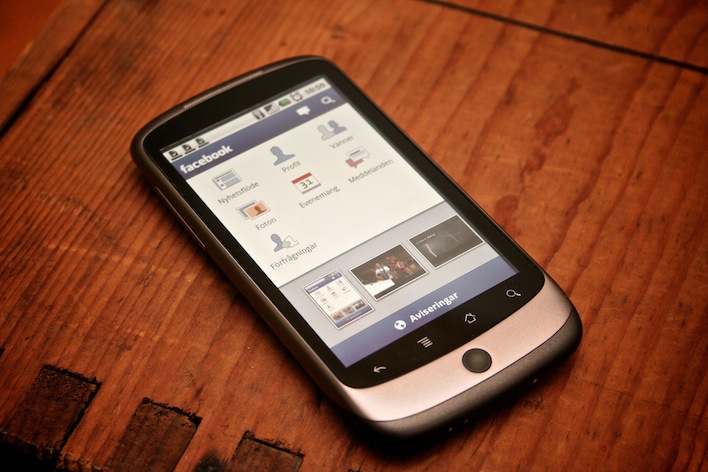
Until today, the company didn’t have any way to make money from its mobile apps due to the lack of ads. Compounding the problem is the fact that consumers really don’t like it when ads take up valuable real estate on their tiny smartphone screens.
[aditude-amp id="flyingcarpet" targeting='{"env":"staging","page_type":"article","post_id":396961,"post_type":"story","post_chan":"none","tags":null,"ai":false,"category":"none","all_categories":"social,","session":"D"}']The company recognized this lack of revenue as a big enough problem that it listed its mobile platform as an investment risk in its S1 filing for an initial public offering.
AI Weekly
The must-read newsletter for AI and Big Data industry written by Khari Johnson, Kyle Wiggers, and Seth Colaner.
Included with VentureBeat Insider and VentureBeat VIP memberships.
For Facebook, brands can now make popular news updates with high levels of engagement into “Sponsored Stories”(shown right) that show on Facebook’s website and mobile apps. Rather than hitting the viewer over the head with outright advertising, these stories have a similar status to updates from his or her friends and family members.
While the strategy is aimed at unlocking Facebook’s final ad revenue frontier, it is also a big shift in the way brands interact and advertise on Facebook. That means a lot is riding on how advertisers react to the new options.
Less ads, more engagement for businesses
To get some perspective, VentureBeat spoke with Victoria Ransom, chief executive at WildFire, a social media company that helps brands market themselves on Facebook.
“Facebook’s strategy really puts the pressure on brands to send out the right content,” said Ransom. “Facebook’s mobile platform has limited real estate and brands need to be careful to make sure their ads are entertaining.”
In short, companies will need to provide engaging, valuable content. If you got constantly bombarded with blatant ads whenever you checked Facebook on your phone, you’d un-like that company’s page pretty quickly. Ransom says that brands will have to focus on starting conversations and make use of the new Offers feature so that customers can engage with the brand and don’t ignore advertising efforts.
The timeliness of ads will also play a crucial role, and Ransom says that a six month-planned ad campaign may not be relevant enough for Facebook’s ever-changing news feed.
[aditude-amp id="medium1" targeting='{"env":"staging","page_type":"article","post_id":396961,"post_type":"story","post_chan":"none","tags":null,"ai":false,"category":"none","all_categories":"social,","session":"D"}']
“Basically if you’re gong to start putting ad content in someone’s stream it needs to be interesting and timely, otherwise it won’t do well,” Ransom told VentureBeat. “Especially now, with Facebook’s new features, brands need to be nimble, they need to listen and understand their customers.”
Will companies like the changes?
In order to be successful, brands will likely need to shift much of their marketing strategy to get the most visibility with Facebook’s new strategy. But will they want to?
“For Facebook, there is a lot of anxiety over changes like this, but people ultimately get used to it, and find it substantially better,” Reggie Bradford, chief executive of social media dashboard Vitrue, told VentureBeat in an interview. “For example, when Facebook shifted between becoming a Fan of a company to Liking a company page, there were short term dips in engagement and then it skyrocketed. I expect a period of transition, but then marketers will see the increased value, especially with the direct messaging of brands and a more curated timeline.”
Bradford also pointed out that it is in a company’s best interest to embrace these changes, especially when it comes to mobile.
[aditude-amp id="medium2" targeting='{"env":"staging","page_type":"article","post_id":396961,"post_type":"story","post_chan":"none","tags":null,"ai":false,"category":"none","all_categories":"social,","session":"D"}']
“If you’re a marketer and you’re not optimized for mobile, you’re missing 40 to 60 percent of your audience. Companies need to optimize the mobile experience as their primary screen,” he said.
As long as brands can see the value in following Facebook’s new strategies, Facebook will reap the benefits. It might not be enough to eliminate the mobile platform’s risk entirely, but it is the first step in generating revenue from platform that has been free of ads for a very long time.
Mobile phone on a table with Facebook app image via Flickr user Johan Larsson
VentureBeat's mission is to be a digital town square for technical decision-makers to gain knowledge about transformative enterprise technology and transact. Learn More
